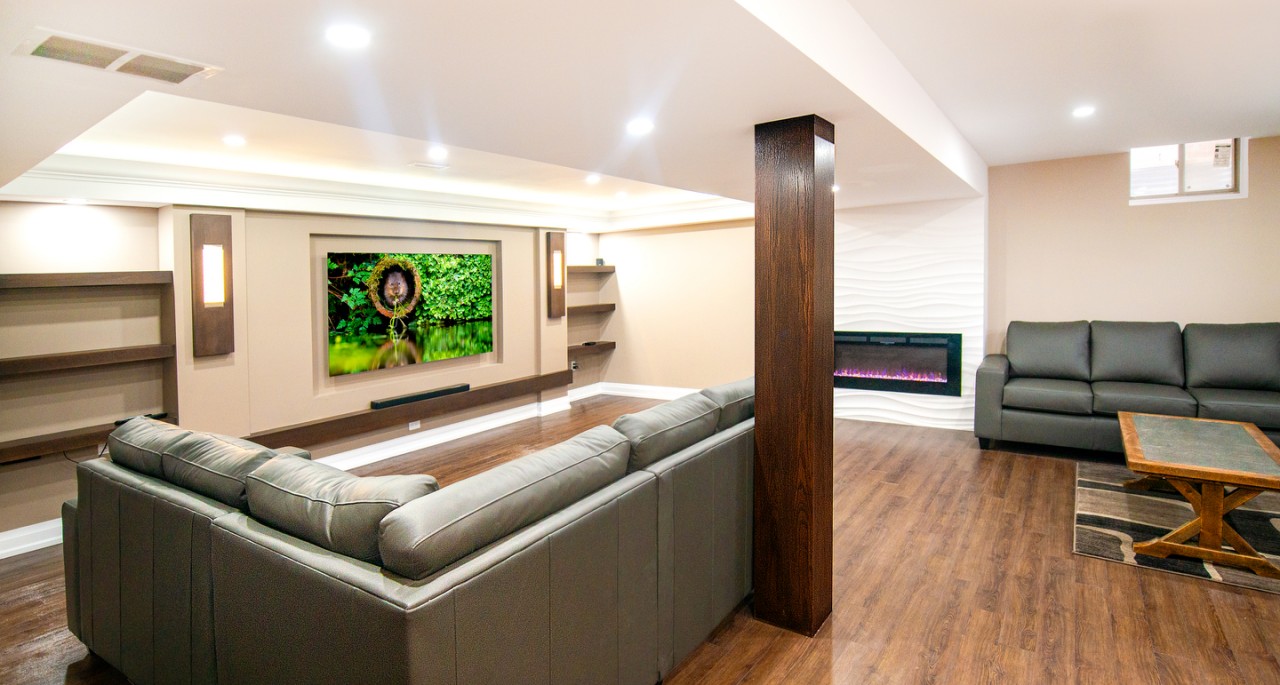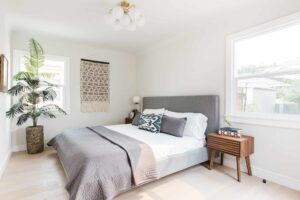Whether you’re trying to create a quiet space for work, block out noisy neighbors, or improve the acoustics in a home theater, soundproofing can make a world of difference. While major renovations like adding extra drywall or insulation can be effective, there are plenty of easy, budget-friendly ways to soundproof a room without tearing down walls. Here are the best methods for reducing noise and creating a more peaceful environment without major renovations.
1. Seal Gaps and Cracks
One of the simplest ways to soundproof a room is to seal any gaps or cracks where sound can easily pass through. Sound travels through the smallest of spaces, so addressing these areas can make a big impact.
- Use weatherstripping: Apply weatherstripping around doors and windows to create a tight seal. This not only helps with soundproofing but also improves energy efficiency by reducing drafts.
- Caulk gaps: Use acoustic caulk or sealant to fill in cracks around windows, doors, baseboards, and any other areas where sound might escape or enter. Acoustic caulk remains flexible and won’t crack over time, making it a durable solution for soundproofing.
- Install door sweeps: Adding a door sweep to the bottom of your interior doors can block sound from traveling under the door. Choose a rubber or vinyl door sweep for better sound absorption.
2. Use Thick Curtains or Soundproof Blinds
Windows are a common source of sound leakage, but adding the right window treatments can help block out unwanted noise. Heavy, thick curtains or soundproof blinds are great for absorbing sound and reducing echoes in a room.
- Soundproof curtains: These are made from dense materials designed to absorb sound waves. Hanging thick, floor-to-ceiling curtains over your windows can help reduce noise, especially if you live in a noisy area or near a busy street.
- Double up on curtains: If soundproof curtains aren’t an option, consider hanging two layers of regular curtains. The more fabric you have, the more sound will be absorbed, and doubling up can provide better insulation against noise.
- Soundproof blinds: Cellular or honeycomb blinds are designed to trap air in their honeycomb-shaped cells, which helps with both sound and temperature insulation. Pair them with curtains for maximum noise reduction.
3. Add Rugs, Carpets, and Padding
Hard surfaces like wood, tile, and laminate floors can reflect and amplify sound, making a room feel noisier. Adding soft materials like rugs and carpets can help absorb sound and reduce noise transmission between floors.
- Use thick area rugs: Lay down a thick area rug to absorb sound, particularly in rooms with hard flooring. The thicker the rug, the better it will be at dampening noise.
- Add a rug pad: For even better sound absorption, place a soundproof rug pad underneath your rug. These pads are typically made from felt or memory foam, which helps block sound from traveling through the floor.
- Wall-to-wall carpeting: If you want to go further, wall-to-wall carpeting is one of the best ways to muffle sound in a room. It provides a large surface area for sound absorption and can make a noticeable difference in both reducing noise and improving acoustics.
4. Hang Acoustic Panels or Art
If you want to reduce echoes and improve the sound quality in a room, acoustic panels are a stylish and effective solution. These panels are designed to absorb sound waves, preventing them from bouncing off hard surfaces.
- Acoustic wall panels: These panels come in various sizes, colors, and patterns, so you can choose options that fit your decor. Hang them on walls or ceilings to absorb sound and reduce echoes. You can even place them strategically behind speakers or in areas where sound tends to bounce.
- DIY acoustic art: For a budget-friendly alternative, you can make your own soundproof art by stretching fabric over a wood frame and filling the back with foam or sound-absorbing material. Hang these “art panels” on the walls to combine function and style.
5. Use Bookshelves and Furniture for Soundproofing
Furniture can play a significant role in blocking and absorbing sound. Strategic placement of bookshelves, cabinets, and even soft furnishings can help create a sound barrier without any major changes to your room.
- Bookshelves as sound barriers: Place tall, heavy bookshelves against walls that are shared with noisy neighbors or areas where sound is coming in. Fill the shelves with books, which act as natural sound absorbers.
- Rearrange furniture: Rearranging large pieces of furniture, like couches, chairs, or wardrobes, to sit against noisy walls can help muffle sound. The denser and heavier the furniture, the better it will block sound.
- Soft furnishings: Add soft furnishings like throw pillows, blankets, and upholstered furniture to absorb sound. The more soft materials you have in a room, the more sound you can absorb, reducing echoes and noise transmission.
6. Install Soundproof Foam Mats or Tiles
Soundproof foam mats or tiles are an easy-to-install, budget-friendly solution for reducing noise in a room. These foam mats are commonly used in home gyms, playrooms, or studios where noise control is important.
- Foam floor mats: Interlocking foam floor mats can help dampen sound between floors and reduce the noise caused by foot traffic. They’re especially useful in home gyms or playrooms where impacts from equipment or toys can create a lot of noise.
- Acoustic foam tiles: Acoustic foam tiles can be mounted to walls or ceilings to absorb sound. They’re lightweight, affordable, and come in various designs, making them a practical choice for creating a soundproofed space.
7. Use Door and Window Draft Stoppers
Gaps around doors and windows allow sound to enter and leave a room. Installing draft stoppers at the base of doors or using window draft blockers can help reduce noise significantly.
- Door draft stoppers: These are simple and affordable tools that block the gap at the bottom of the door, preventing sound from leaking underneath. You can find them in various materials, including foam, rubber, and fabric.
- Window draft blockers: Foam or rubber draft blockers for windows help seal gaps that let noise in. These are especially useful for older windows that may have loosened over time.
8. Soundproof Wall Hangings
Adding sound-absorbing materials to your walls can be an easy way to reduce noise. Wall hangings made from thick fabrics or quilts can act as soundproof barriers, adding both style and functionality.
- Tapestries and quilts: Hang thick tapestries, blankets, or quilts on the walls to absorb sound. These are not only decorative but also help dampen noise, making them a perfect dual-purpose solution for soundproofing.
- Soundproof blankets: You can also hang soundproof blankets on the walls, doors, or windows. These blankets are designed to block sound and are commonly used in recording studios, but they can work just as well in any room where you want to reduce noise.
9. Add Acoustic Ceiling Clouds or Baffles
If noise from above is an issue, such as in multi-level homes or apartments, soundproofing your ceiling may be necessary. Acoustic ceiling clouds or baffles are designed to reduce noise by absorbing sound waves that travel through the ceiling.
- Ceiling clouds: Acoustic ceiling clouds are suspended from the ceiling to absorb sound. These are commonly used in recording studios or office spaces, but they can be installed in any room where you want to reduce overhead noise.
- Ceiling baffles: Ceiling baffles are vertical panels that hang from the ceiling and absorb sound. They’re effective for reducing echo and are often used in large rooms with high ceilings, but they can be a good option for any space.
Final Thoughts: Soundproof Your Space Without Breaking the Bank
Soundproofing your home doesn’t have to involve major renovations or expensive installations. By using simple solutions like sealing gaps, adding rugs, hanging curtains, and rearranging furniture, you can significantly reduce noise and create a quieter, more peaceful environment. With these easy DIY methods, you can enjoy the benefits of a soundproofed room without the need for tearing down walls or making permanent changes to your space. Happy soundproofing!









